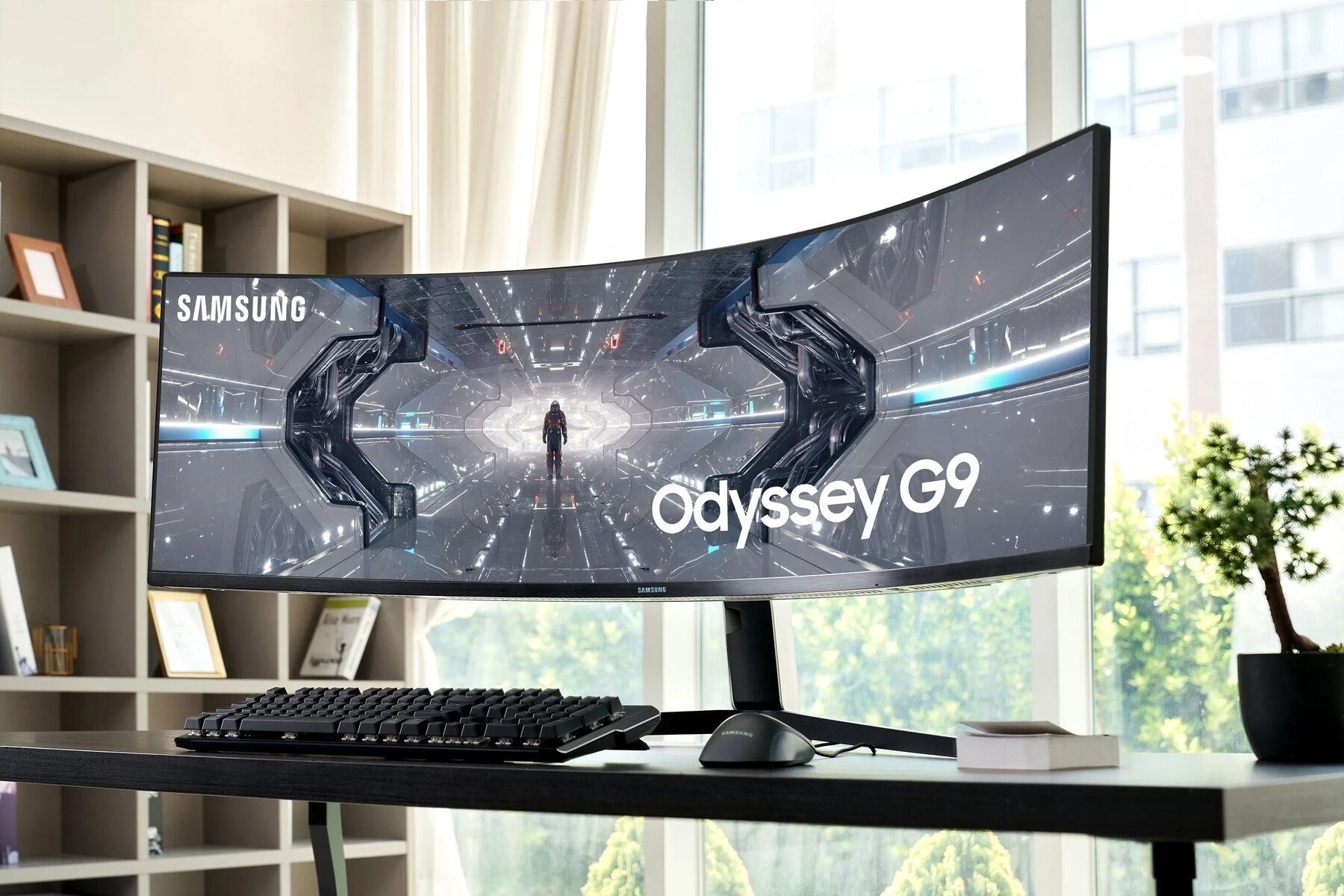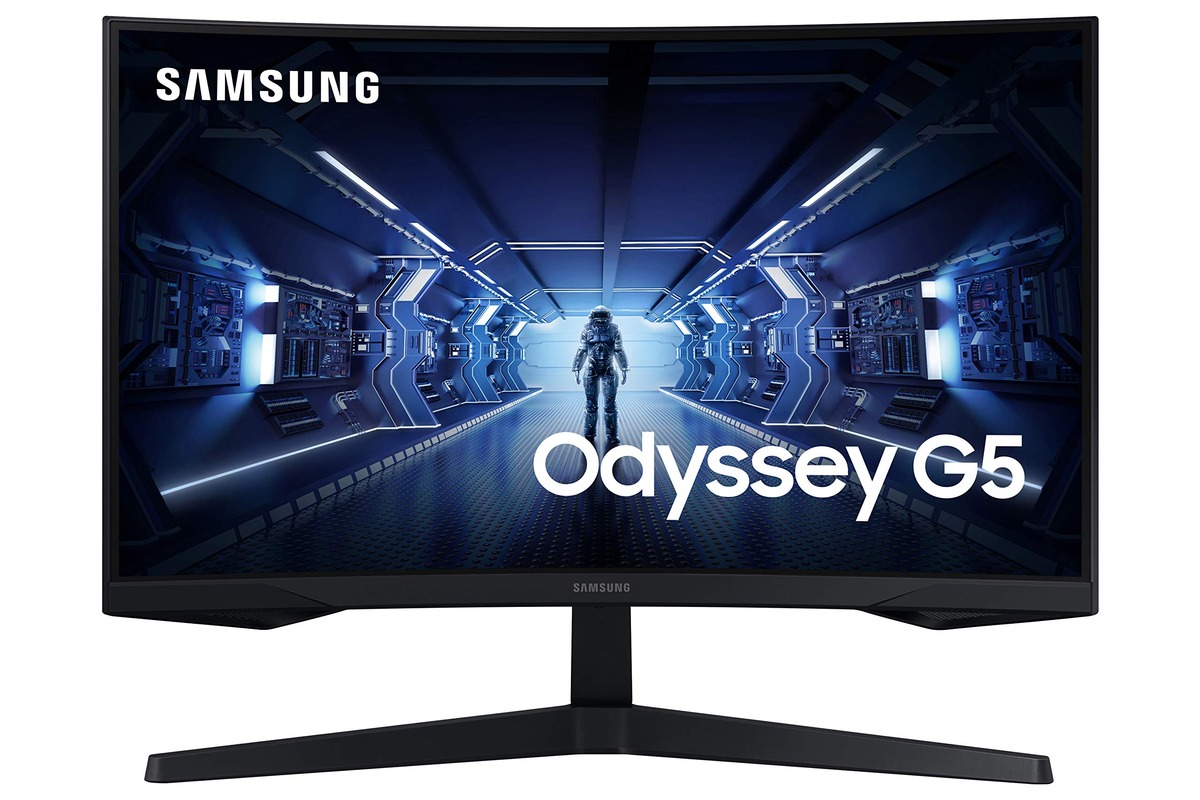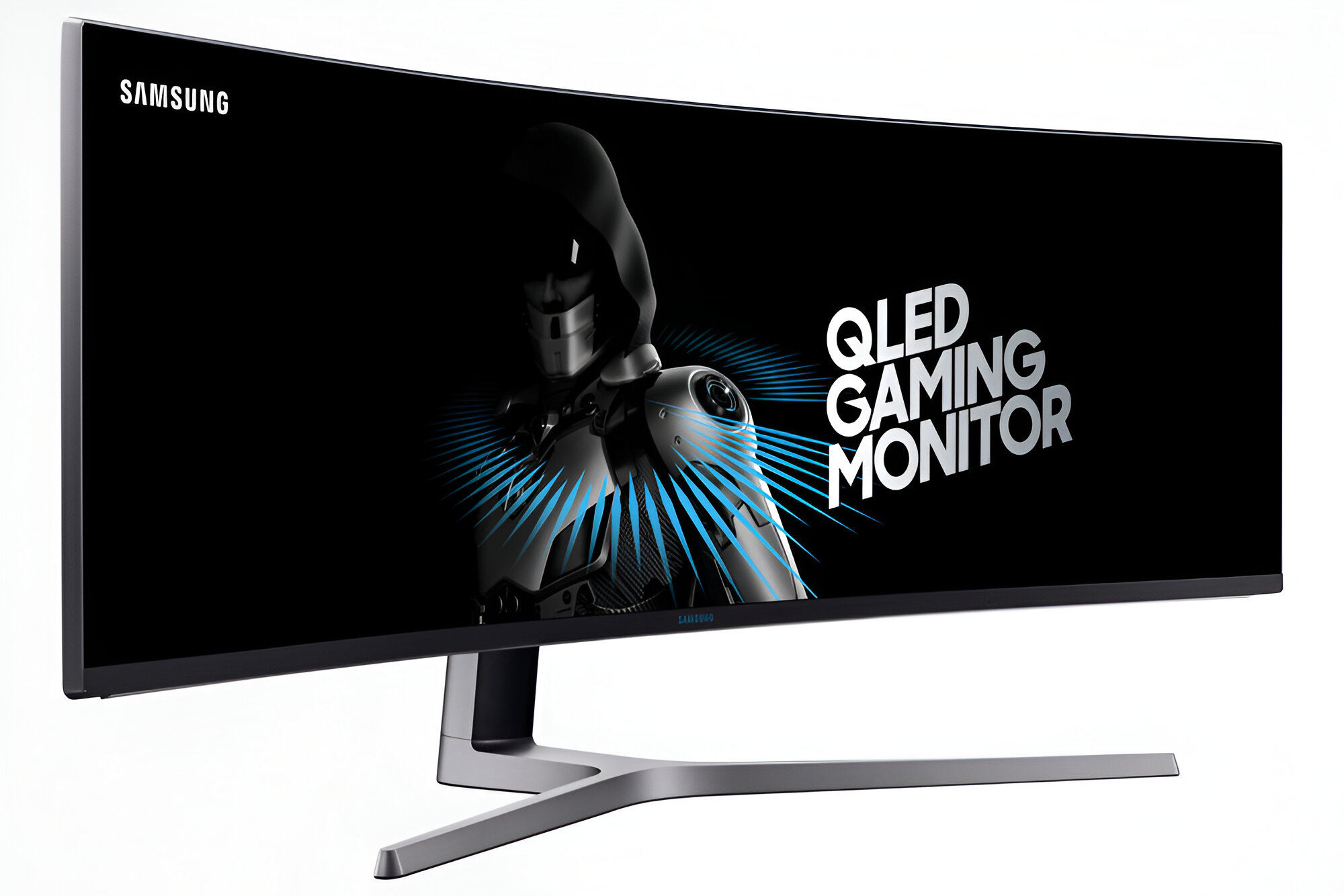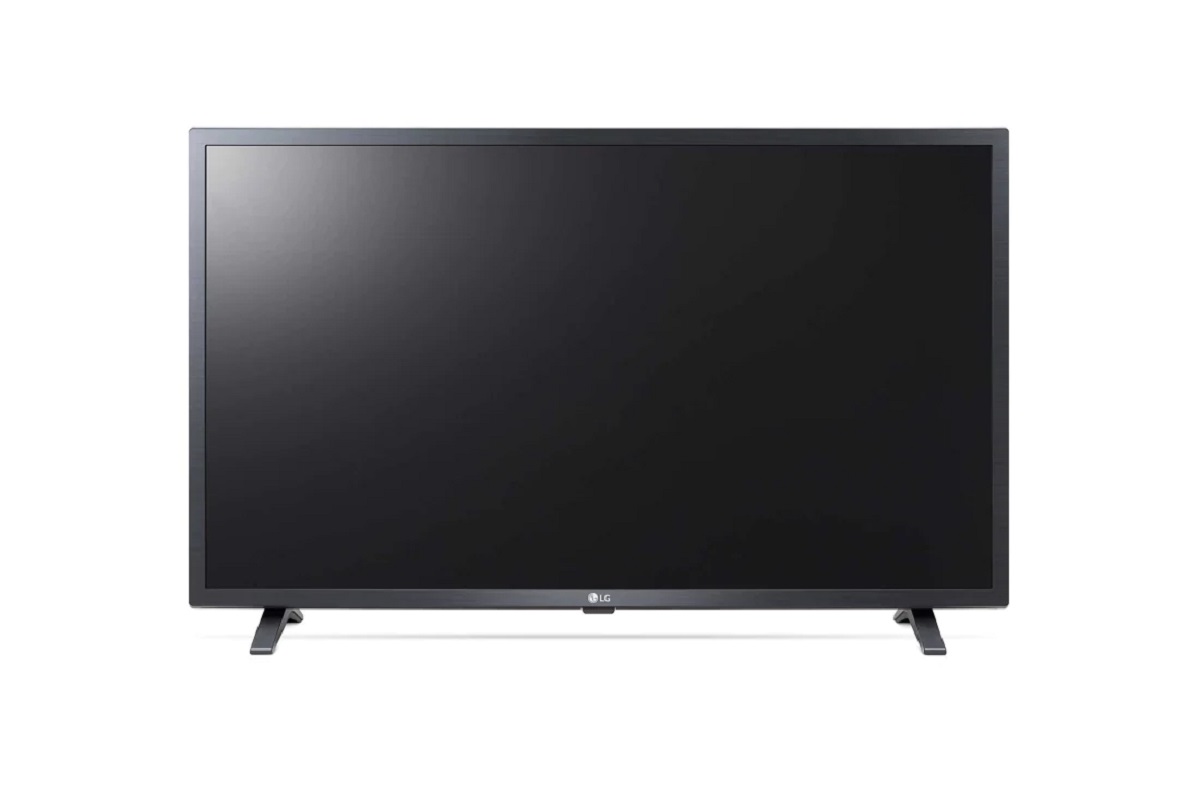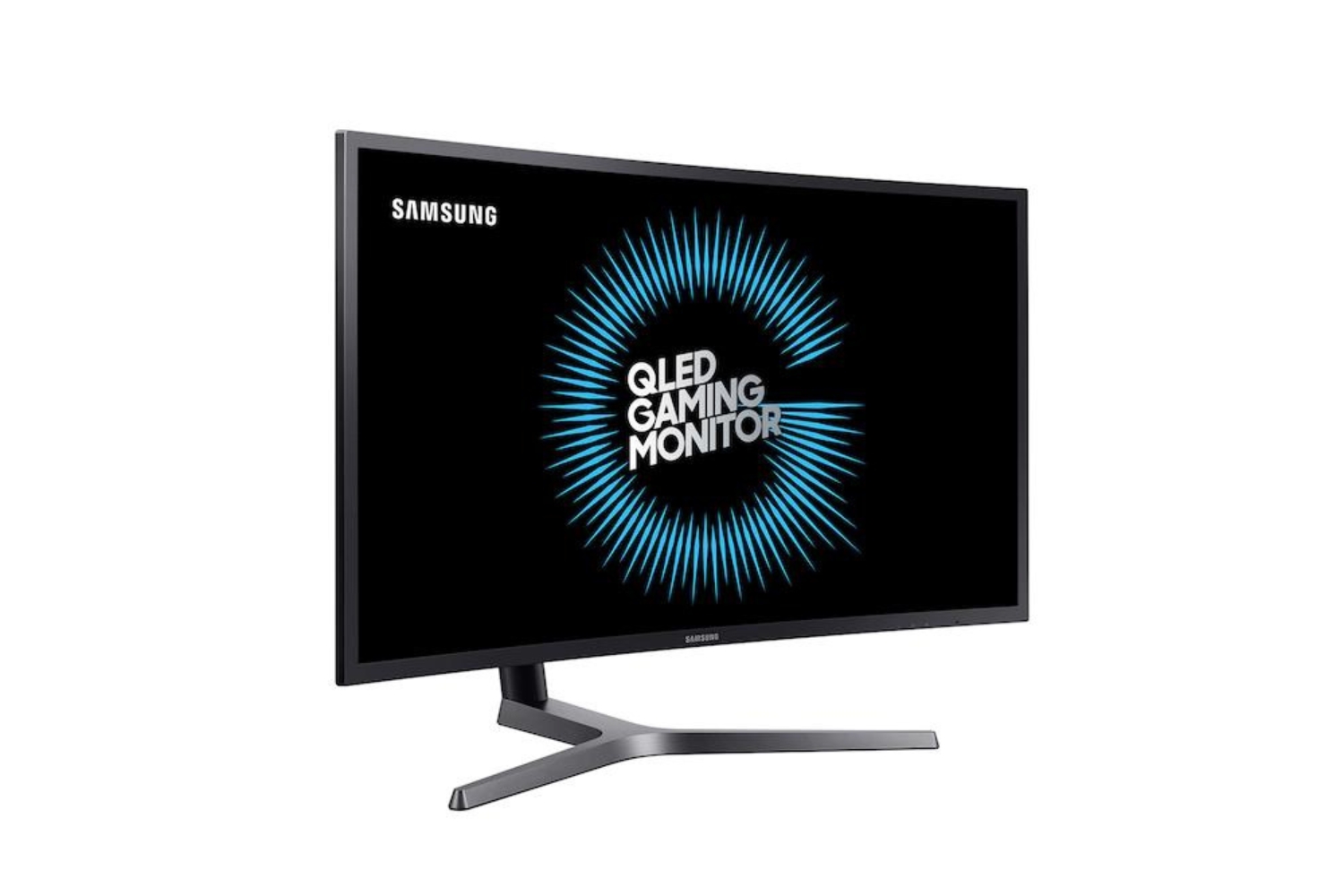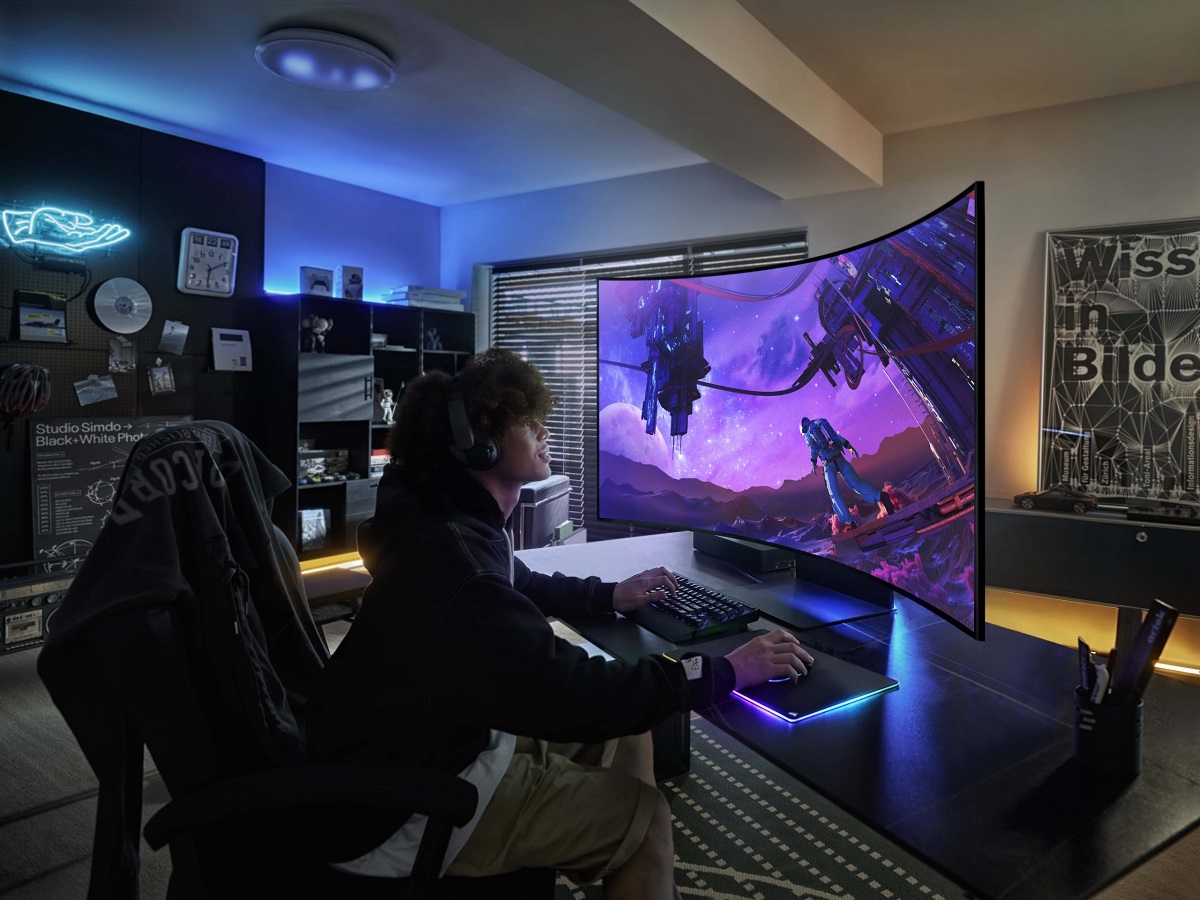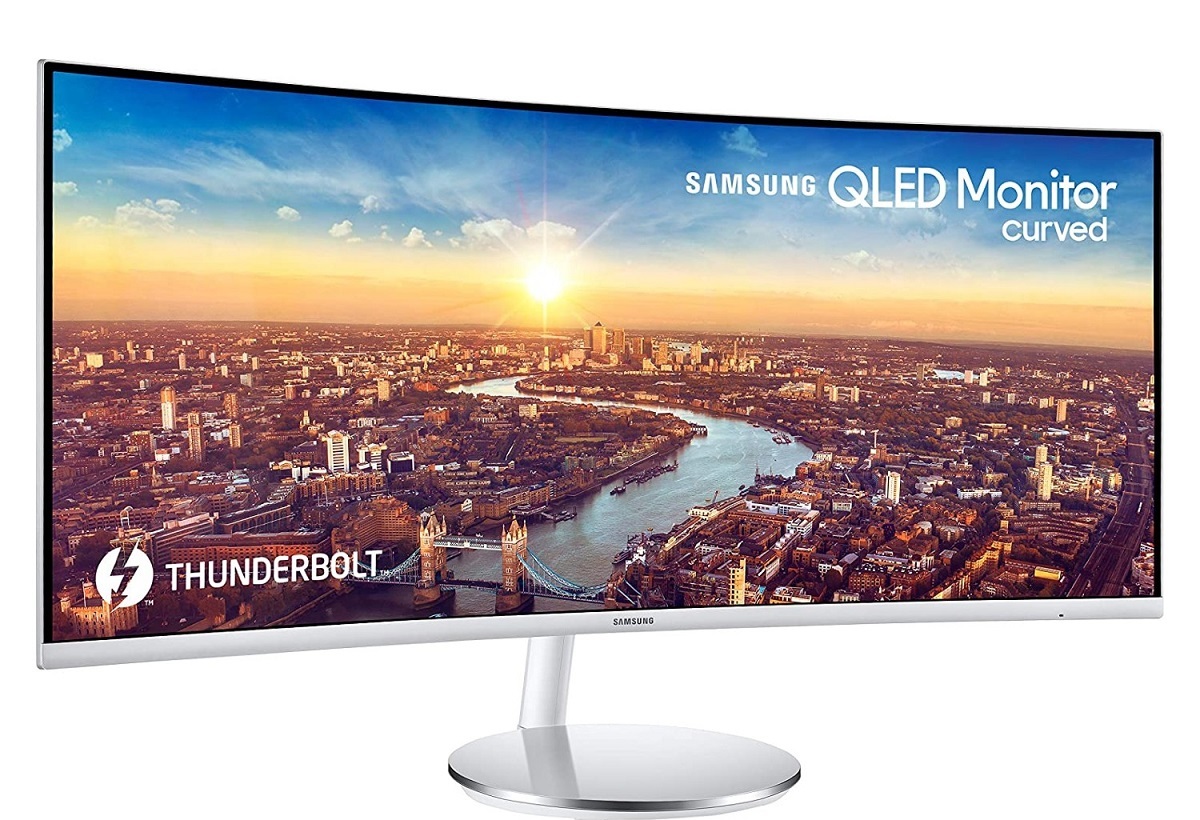Introduction
Welcome to the world of gaming where every millisecond matters. As a gamer, you know how crucial it is to have a smooth and immersive gaming experience. The quality of your gaming monitor plays a significant role in achieving that. One popular choice among avid gamers is the QLED gaming monitor.
QLED, short for Quantum Dot Light Emitting Diode, is an advanced display technology that offers stunning visuals, vibrant colors, and impressive brightness levels. Whether you’re exploring vast virtual worlds or engaging in intense multiplayer battles, a QLED gaming monitor can elevate your gaming experience to new heights.
However, a QLED gaming monitor alone isn’t enough to unlock its full potential. To enhance your gaming experience further, you should consider turning on FreeSync, a technology developed by AMD. But what exactly is FreeSync?
FreeSync is a synchronization technology that ensures smooth and tear-free gameplay. It eliminates screen tearing and stuttering by synchronizing the refresh rate of your monitor with your graphics card’s output. The result is a seamless and fluid gaming experience, with no distractions or visual artifacts to hamper your performance.
Now, you might be wondering, why should you bother turning FreeSync on? The answer is simple – it’s all about maximizing your gaming experience. With FreeSync enabled, you can enjoy smoother gameplay, enhanced responsiveness, and reduced input lag. Whether you’re playing fast-paced action games or exploring atmospheric open-world adventures, FreeSync ensures that every frame is rendered seamlessly and in perfect harmony with your movements.
In this article, we’ll guide you through the process of turning FreeSync on for your QLED gaming monitor. We’ll provide step-by-step instructions, along with tips to optimize your FreeSync settings according to your preferences. So, without further ado, let’s dive into the process and unlock the full capabilities of your QLED gaming monitor with FreeSync!
What is a QLED Gaming Monitor?
A QLED gaming monitor is a type of display that utilizes Quantum Dot technology to produce vibrant and lifelike colors. Quantum dots are microscopic particles that emit light when exposed to a light source, resulting in highly accurate color reproduction. QLED stands for Quantum Dot Light Emitting Diode, and it represents the next generation of display technology for gaming enthusiasts.
One of the standout features of QLED gaming monitors is their ability to achieve deep blacks and bright whites, thanks to their high contrast ratios. This ensures that every detail in your games is rendered with precision, allowing you to immerse yourself in a visually stunning gaming experience.
Another advantage of QLED technology is its ability to produce a wide color gamut, enabling the monitor to display a broader range of colors. This leads to more vibrant and realistic visuals, with colors that pop off the screen. Whether you’re exploring lush landscapes or engaging in intense firefights, the QLED gaming monitor will bring your games to life in ways you’ve never seen before.
In addition to its impressive color reproduction, a QLED gaming monitor offers fast response times and high refresh rates, ensuring that every action in your games is displayed smoothly and without motion blur. This is crucial for competitive gamers who require quick reflexes and precise control.
Furthermore, QLED monitors often come equipped with features designed specifically for gaming. These can include game mode settings that optimize the display for different genres of games, such as FPS, RTS, or RPG. Some models also incorporate advanced technologies like HDR (High Dynamic Range) for improved contrast and brightness, or curved screens for a more immersive gaming experience.
Overall, a QLED gaming monitor combines cutting-edge display technology with features tailored to gaming, making it an ideal choice for gamers who demand the best visuals, responsiveness, and immersion. With a QLED gaming monitor, you can bring your gaming experience to a whole new level of realism and excitement.
What is FreeSync?
FreeSync is a technology developed by AMD (Advanced Micro Devices) that aims to provide gamers with a smoother and more immersive gaming experience. It is a form of adaptive sync that synchronizes the refresh rate of your monitor with the output of your graphics card, eliminating screen tearing and stuttering.
Screen tearing occurs when the monitor’s refresh rate and the graphics card’s frame rate are out of sync. This results in a visible horizontal line across the screen, where two different frames are displayed simultaneously. It can be distracting and disrupt the overall gaming experience.
With FreeSync, screen tearing is effectively eliminated. The technology dynamically adjusts the refresh rate of the monitor to match the varying frame rates output by the graphics card. This ensures that the monitor displays each frame as it is rendered by the graphics card, resulting in a smooth and tear-free gameplay experience.
FreeSync operates within a range of refresh rates, typically specified by the monitor manufacturer. This range, known as the FreeSync range, indicates the minimum and maximum refresh rates at which FreeSync can function effectively. If the frame rate falls outside this range, FreeSync will disengage, and the monitor reverts to its default behavior.
In addition to eliminating screen tearing, FreeSync also reduces stuttering or microstuttering. Stuttering occurs when there are inconsistencies in frame times, causing brief pauses or hiccups in the gameplay. By synchronizing the monitor’s refresh rate with the graphics card’s output, FreeSync minimizes the occurrence of stuttering, resulting in a smoother and more responsive gaming experience.
It’s important to note that FreeSync is an AMD technology, meaning it is compatible with AMD graphics cards and a select number of monitors. The counterpart technology for NVIDIA graphics cards is called G-Sync. While FreeSync and G-Sync are similar in function, they operate differently, and a monitor built for one technology may not be compatible with the other.
Overall, FreeSync is a valuable technology for gamers. By providing a tear-free and stutter-free gaming experience, it enhances immersion and responsiveness, allowing you to fully enjoy your favorite games without visual distractions. If you have a compatible QLED gaming monitor and an AMD graphics card, turning on FreeSync is highly recommended for an optimized gaming experience.
Why Should You Turn FreeSync On?
Turning FreeSync on for your QLED gaming monitor can greatly enhance your gaming experience. Here are several reasons why you should consider enabling FreeSync:
- Eliminates Screen Tearing: One of the main advantages of FreeSync is its ability to eliminate screen tearing. This occurs when the monitor’s refresh rate and the graphics card’s frame rate are out of sync, resulting in a visible horizontal line across the screen. With FreeSync enabled, the monitor and graphics card sync up, ensuring a tear-free display.
- Reduces Stuttering: FreeSync also helps reduce stuttering or microstuttering in games. Stuttering occurs when there are inconsistencies in frame times, resulting in brief pauses or hiccups in the gameplay. By synchronizing the refresh rate of the monitor with the output of the graphics card, FreeSync minimizes stuttering, providing a smoother and more fluid gaming experience.
- Enhances Responsiveness: With FreeSync enabled, the monitor is in sync with the graphics card’s output, resulting in improved responsiveness. This means that the actions you perform in-game are displayed on the screen faster, allowing for quicker reaction times. Whether you’re aiming at enemies, executing precise movements, or navigating through challenging levels, FreeSync ensures that your inputs are reflected on the screen without delay.
- Minimizes Input Lag: Input lag refers to the delay between when you perform an action (such as pressing a key or moving the mouse) and when it is displayed on the screen. With FreeSync, input lag is minimized, enhancing the overall responsiveness of your gaming experience. This is especially crucial for competitive gaming, where every millisecond counts.
- Improves Visual Fluidity: FreeSync enhances the visual fluidity of your games by synchronizing the monitor’s refresh rate with the graphics card’s output. This ensures that each frame is displayed smoothly and seamlessly, resulting in a more immersive and enjoyable gaming experience.
By turning FreeSync on for your QLED gaming monitor, you can unlock these benefits and enjoy a gaming experience that is not only visually stunning but also smooth, responsive, and free from distractions caused by screen tearing and stuttering. It’s a feature that can truly make a difference in your gaming sessions and help you gain a competitive edge.
Step-by-Step Guide: How to Turn FreeSync On?
If you own a QLED gaming monitor and want to take full advantage of FreeSync, follow these step-by-step instructions to enable FreeSync:
Step 1: Check if your QLED Gaming Monitor supports FreeSync
First, ensure that your QLED gaming monitor supports FreeSync technology. Look for the FreeSync logo on the monitor or consult the manufacturer’s specifications. If your monitor does not support FreeSync, you may need to consider upgrading to a compatible model.
Step 2: Enable FreeSync in the Monitor Settings
Access your monitor’s settings menu, usually accessible through physical buttons on the monitor or through an on-screen display (OSD) menu. Navigate to the display or gaming settings section and locate the FreeSync option. Enable FreeSync by selecting the appropriate setting.
Step 3: Enable FreeSync in your Computer’s Graphics Settings
Next, you need to enable FreeSync in your computer’s graphics settings. Right-click on the desktop and select “Graphics Options” or “Graphics Properties” (depending on your graphics card). Look for the section related to display settings or gaming settings and find the FreeSync option. Enable FreeSync by toggling the setting to “On” or a similar option.
Step 4: Adjust FreeSync settings according to your preferences
Once FreeSync is enabled, you may have the option to adjust certain settings according to your preferences. This can include the FreeSync range or the desired refresh rate. Refer to your monitor’s user manual or the manufacturer’s website for specific instructions on adjusting FreeSync settings.
Step 5: Test and Verify FreeSync Functionality
Finally, it’s time to test if FreeSync is functioning correctly. Launch a game or a graphic-intensive application and observe the gameplay. If FreeSync is working, you should notice a significant reduction in screen tearing and stuttering. Additionally, the overall gaming experience should feel smoother and more responsive.
It’s important to note that some games may require additional settings changes to work optimally with FreeSync. Check the game settings or consult the game’s documentation to ensure FreeSync compatibility and make any necessary adjustments.
By following these steps, you can enable FreeSync on your QLED gaming monitor and enjoy a tear-free, smooth, and immersive gaming experience. Take your gaming to new heights with the power of FreeSync!
Step 1: Check if your QLED Gaming Monitor supports FreeSync
Before enabling FreeSync, it’s essential to determine whether your QLED gaming monitor supports this technology. FreeSync is not available on all monitors, so verifying compatibility is the first step to ensure a successful setup.
To check if your QLED gaming monitor supports FreeSync, you can follow these steps:
1. Read the Manufacturer’s Specifications
Start by consulting the manufacturer’s specifications for your specific QLED gaming monitor. Look for information regarding FreeSync support. Manufacturers often provide detailed product information on their websites or in the user manual.
2. Look for the FreeSync Logo
Inspect your monitor for the FreeSync logo. The FreeSync logo indicates that the monitor is certified to support the technology. It is typically displayed on the monitor itself or listed in the product information. If you find the FreeSync logo, you can be confident that your monitor is compatible.
3. Utilize Online Resources
If you’re unable to find the necessary information from the manufacturer or the FreeSync logo, you can turn to online resources. Visit the manufacturer’s website or reputable tech websites that provide detailed reviews and specifications for various monitor models. Look for mentions of FreeSync compatibility for your specific QLED gaming monitor model.
4. Contact Customer Support
If you still can’t determine if your QLED gaming monitor supports FreeSync, consider reaching out to the manufacturer’s customer support. They can provide you with accurate information about your monitor’s compatibility with FreeSync and offer any additional assistance you may need.
It’s important to note that FreeSync is an AMD technology, so it is primarily compatible with AMD graphics cards. However, certain QLED gaming monitors also offer compatibility with NVIDIA graphics cards through their G-Sync Compatible mode.
By taking the time to check if your QLED gaming monitor supports FreeSync, you can ensure that you are able to fully utilize this technology and enjoy its benefits. With FreeSync enabled, you’ll experience smoother gameplay, reduced screen tearing, and improved responsiveness, contributing to a more immersive gaming experience.
Step 2: Enable FreeSync in the Monitor Settings
After confirming that your QLED gaming monitor supports FreeSync, the next step is to enable FreeSync in the monitor settings. Follow these steps to enable FreeSync:
1. Access the Monitor Settings Menu
Locate the physical buttons on your QLED gaming monitor or use the on-screen display (OSD) menu to access the monitor settings. The physical buttons are typically located on the side or bottom bezel of the monitor.
2. Navigate to the Display or Gaming Settings Section
Once in the monitor settings, navigate to the section related to display settings or gaming settings. The exact location may vary depending on your monitor model, but it is usually labeled as “Display,” “Picture,” or “Gaming.”
3. Find the FreeSync Option
Look for the FreeSync option within the display or gaming settings section. It may be labeled as “FreeSync,” “Adaptive Sync,” or a similar term. Some monitors also have different variants of FreeSync, such as FreeSync Premium or FreeSync Pro, providing additional features or performance.
4. Enable FreeSync
Select the FreeSync option and toggle it to “On” or a similar setting. Once enabled, the monitor will synchronize its refresh rate with the graphics card’s output, ensuring a tear-free and smooth gaming experience.
5. Save and Exit the Settings
After enabling FreeSync, save the settings and exit the monitor settings menu. This will apply the changes and activate FreeSync on your QLED gaming monitor.
It is important to note that the menu layout and options may vary between different monitor models. Refer to your monitor’s user manual or consult the manufacturer’s website for specific instructions on accessing and enabling FreeSync on your particular QLED gaming monitor.
Once you have successfully enabled FreeSync in the monitor settings, you are one step closer to enhancing your gaming experience with smoother gameplay and reduced screen tearing. The next step is to enable FreeSync in your computer’s graphics settings, which we will cover in the following step-by-step guide.
Step 3: Enable FreeSync in Your Computer’s Graphics Settings
Once you have enabled FreeSync in the monitor settings, the next step is to enable FreeSync in your computer’s graphics settings. Follow these steps to enable FreeSync:
1. Right-click on the Desktop
To access your computer’s graphics settings, start by right-clicking on an empty area of your desktop. This will open a context menu with various options.
2. Select “Graphics Options” or “Graphics Properties”
In the context menu, look for an option labeled “Graphics Options” or “Graphics Properties” (the exact wording may vary depending on your graphics card and driver software). Click on this option to open the graphics settings.
3. Locate the Display Settings
Once in the graphics settings, navigate to the section related to display settings. This may be labeled as “Display,” “Monitor,” or “Graphics Card.”
4. Find the FreeSync Option
Look for the FreeSync option within the display settings section. Depending on your graphics card and driver software, it may appear as “FreeSync,” “Adaptive Sync,” or a similar name.
5. Enable FreeSync
Select the FreeSync option and toggle it to “On” or enable the setting according to your graphics card’s software interface. This will enable FreeSync on your computer’s graphics settings, allowing it to synchronize with your QLED gaming monitor.
6. Save and Apply the Changes
After enabling FreeSync, save the changes made to the graphics settings and apply them. This will activate FreeSync and ensure that your computer’s graphics card and QLED gaming monitor are synchronized for tear-free and smooth gameplay.
It is important to note that the steps outlined here may vary slightly depending on the graphics card and driver software you are using. If you are unsure about the exact location of the FreeSync option in your graphics settings, refer to the documentation provided with your graphics card or consult the manufacturer’s website for specific instructions.
With FreeSync now enabled in both your monitor and computer’s graphics settings, you are ready to experience a seamless and immersive gaming experience with reduced screen tearing. In the next step, we will explore how to optimize your FreeSync settings according to your preferences.
Step 4: Adjust FreeSync Settings According to Your Preferences
After enabling FreeSync in both your QLED gaming monitor and computer’s graphics settings, you have the flexibility to adjust the FreeSync settings according to your preferences. Follow these steps to optimize your FreeSync settings:
1. Refer to the Monitor’s User Manual
Start by referring to your QLED gaming monitor’s user manual or the manufacturer’s website for guidance on optimizing FreeSync settings. The user manual often provides detailed instructions on adjusting specific settings or customizing the FreeSync experience to suit your needs.
2. Adjust the FreeSync Range
Some QLED gaming monitors allow you to adjust the FreeSync range. The FreeSync range represents the minimum and maximum refresh rates at which FreeSync is active. By widening the range, you can ensure smoother gameplay in a broader range of situations. Consult your monitor’s user manual or on-screen display (OSD) menu for instructions on adjusting the FreeSync range, if available.
3. Set the Desired Refresh Rate
Depending on your QLED gaming monitor, you may have the option to adjust the refresh rate. The refresh rate is the number of times the monitor refreshes the image on the screen per second. Higher refresh rates can provide smoother motion and reduced input lag. Experiment with different refresh rates and find the one that offers the best balance between smoothness and performance for your gaming preferences.
4. Customize Game Mode Settings
Many QLED gaming monitors offer different game mode settings tailored to various gaming genres, such as FPS (First-Person Shooter), RTS (Real-Time Strategy), or RPG (Role-Playing Game). These presets optimize the display settings to enhance specific types of games. Explore the available game mode settings and select the one that enhances your gaming experience the most.
5. Fine-Tune Brightness, Contrast, and Color Settings
Make minor adjustments to the brightness, contrast, and color settings of your QLED gaming monitor to suit your personal preferences. These settings can impact the overall visual quality and immersion of your gaming experience. A well-calibrated display can bring out the best in your games, ensuring accurate colors and vibrant visuals.
Remember that each monitor model may have different options and settings available. The key is to experiment and find the configuration that offers the best balance of visual quality, smoothness, and responsiveness for your individual gaming style.
Keep in mind that the FreeSync settings adjusted in your monitor may interact with the settings configured in your computer’s graphics control panel. Consider exploring the settings available in the graphics control panel to fine-tune the FreeSync performance based on your preferences.
By adjusting the FreeSync settings according to your preferences, you can further enhance your gaming experience and tailor it to your unique needs. With optimized FreeSync settings, enjoy tear-free, smooth gameplay with stunning visuals on your QLED gaming monitor.
Step 5: Test and Verify FreeSync Functionality
After enabling and adjusting the FreeSync settings on your QLED gaming monitor, it’s time to test and verify the functionality of FreeSync. Follow these steps to ensure that FreeSync is working correctly:
1. Launch a Game or Graphic-Intensive Application
To test FreeSync, launch a game or a graphic-intensive application on your computer. Choose a game that is known to push your system’s graphics capabilities or one that you frequently play.
2. Observe the Gameplay
During gameplay, pay close attention to the visual fluidity and smoothness of the game. Notice if there are any visible screen tearing or stuttering effects. Remember, the purpose of FreeSync is to eliminate these artifacts and provide a seamless gaming experience.
3. Verify the Activation of FreeSync
Some QLED gaming monitors have an on-screen display (OSD) feature that shows whether FreeSync is active. Check if your monitor displays an indicator or notification confirming that FreeSync is enabled. This serves as a visual reassurance that FreeSync is working as intended.
4. Evaluate Gameplay Experience
As you play, evaluate the overall experience. Take note of the smoothness, responsiveness, and reduction in screen tearing or stuttering. Does the gameplay feel more immersive and fluid compared to when FreeSync was not enabled?
5. Adjust Settings if Necessary
If you encounter any issues or notice areas for improvement, consider going back to the previous steps and fine-tune the FreeSync settings accordingly. Experiment with different refresh rates, adjust the FreeSync range, or explore additional monitor and graphics settings to optimize your gaming experience.
Remember that FreeSync may not be active in certain situations, such as when the frame rate falls outside the supported FreeSync range. If you experience screen tearing or stuttering during gameplay, it may indicate that FreeSync has disengaged due to the frame rate exceeding the supported range.
By thoroughly testing and verifying FreeSync functionality, you can ensure that it is working as intended, providing you with a tear-free, smooth, and immersive gaming experience. Take the time to explore different games and applications to truly appreciate the benefits of FreeSync on your QLED gaming monitor.
Conclusion
Turning on FreeSync for your QLED gaming monitor can greatly enhance your gaming experience. By synchronizing the refresh rate of your monitor with your graphics card’s output, FreeSync eliminates screen tearing and stuttering, resulting in a smoother and more immersive gameplay experience.
In this guide, we provided a step-by-step process to enable FreeSync on your QLED gaming monitor. We explored the importance of checking if your monitor supports FreeSync and how to enable it in both the monitor settings and your computer’s graphics settings. We also discussed adjusting FreeSync settings based on your preferences and the importance of testing and verifying FreeSync functionality.
FreeSync not only enhances the visual quality of your games but also improves responsiveness and reduces input lag. This technology ensures that every frame is displayed seamlessly, allowing for quicker reaction times and a more immersive gaming experience.
Remember, FreeSync is compatible with AMD graphics cards, although some QLED gaming monitors also offer compatibility with NVIDIA graphics cards through G-Sync Compatible mode. Checking the specifications of your monitor and graphics card is essential to ensure a successful FreeSync setup.
Now that you have followed the steps outlined in this guide and enabled FreeSync on your QLED gaming monitor, it’s time to enjoy the benefits. Dive into your favorite games and experience tear-free, smooth, and fluid gameplay like never before.
Experiment with different settings, fine-tune the FreeSync range, and explore additional optimizations to customize your gaming experience even further. With FreeSync, you’ll immerse yourself in breathtaking visuals, responsive gameplay, and an enhanced level of enjoyment.
So, get ready to take your gaming sessions to new heights with the power of FreeSync and your QLED gaming monitor. Embrace a world of smoothness and immersion, where every frame comes to life with incredible clarity and precision.







